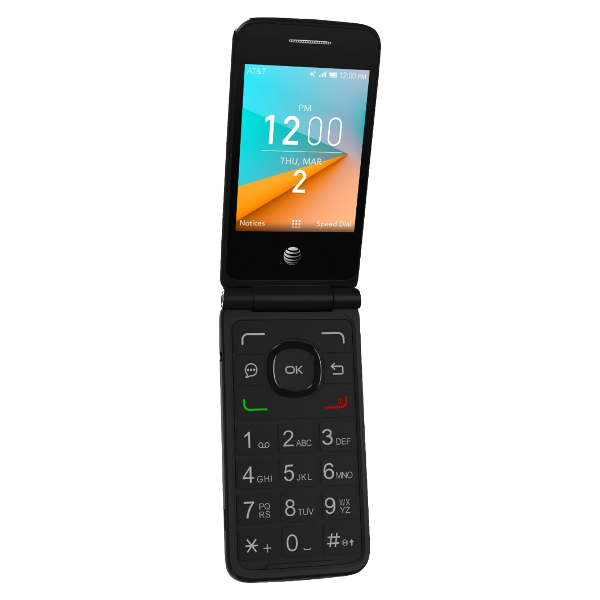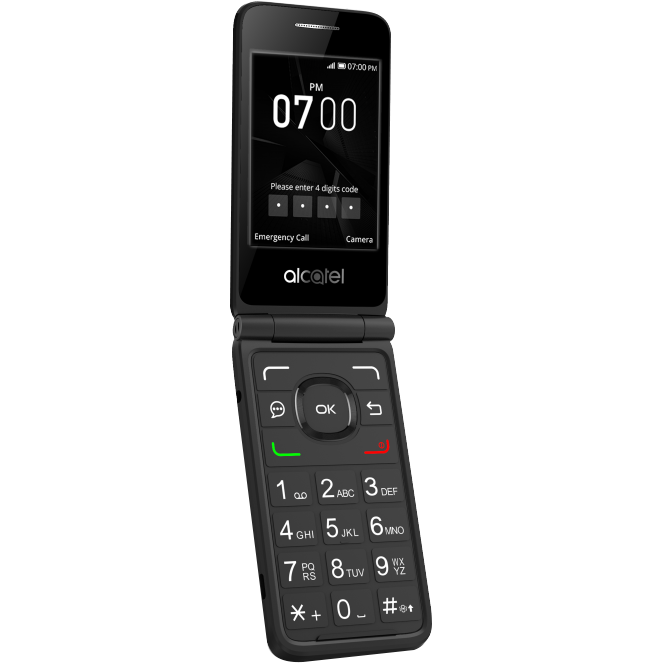DEBUG-ENABLED
Debug-enabled devices are the easiest to use for developing applications and studying KaiOS system behavior. The use of codes ( *#*#33284#*#* and *#*#0574#*#* ) is a feature that belongs mainly to those models powered by two chipsets, Qualcomm and Spreadtrum. Of the former, only the various Nokia released by HMD have the ability to debug, while the latter are almost all suitable for this function.
This page will list only the good debugging-enabled KaiOS phones based on Qualcomm and Spreadtrum, as required by the open source nature of the operating system. I thank the respective owners of the following devices for the feedback provided and all their researches.
Use the index below to help you navigate this page:
Here is a brief overview of what you need to know before you start using any guide, the diagram below has been modified to represent only KaiOS devices with Qualcomm and Spreadtrum chipsets:
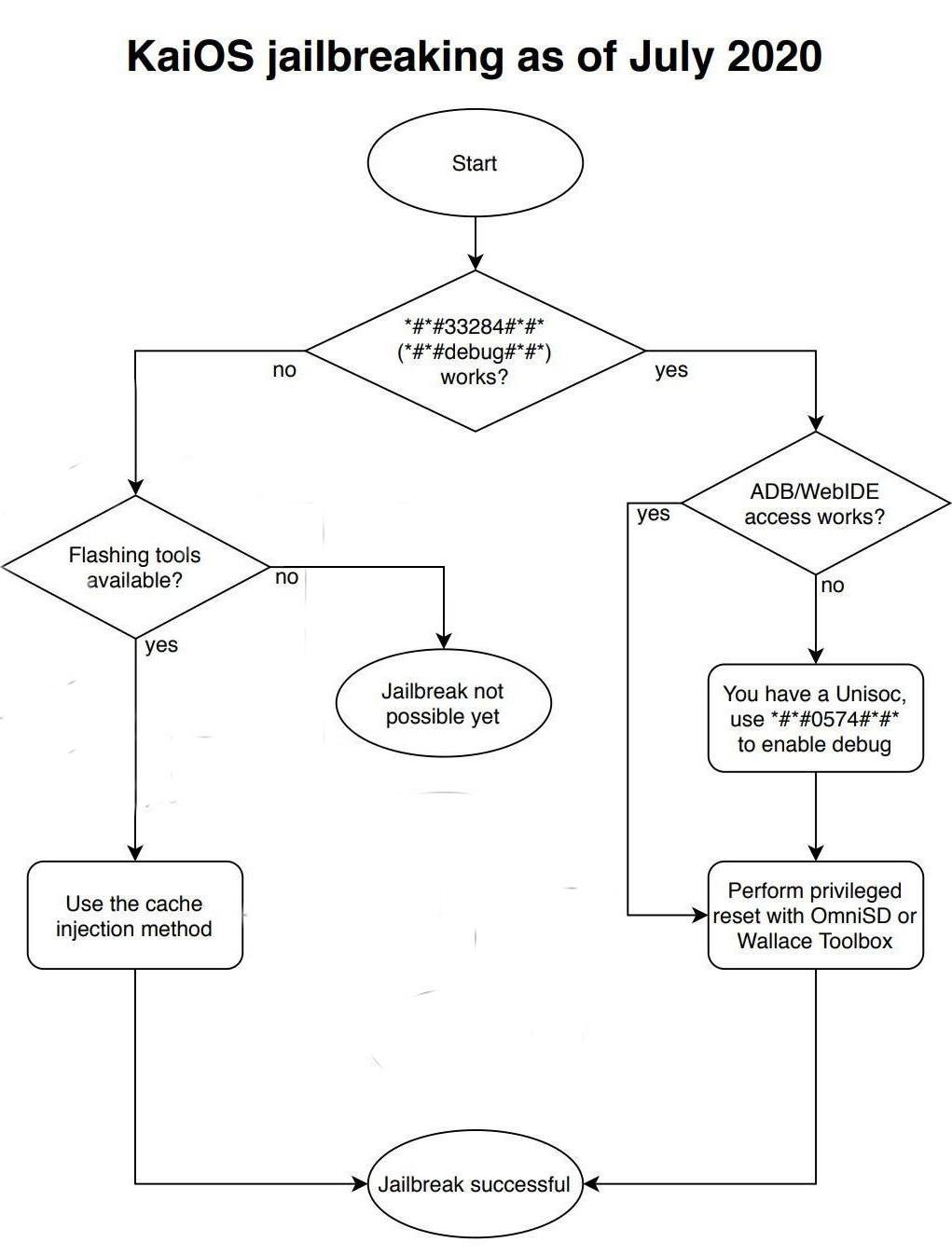
Mediatek-based models also have their own easy way to enable USB debugging and jailbreak (see here), but it will never be as simple as with these debug-enabled KaiOS phones.
On all it is possible to test the site W2D.bananahackers.net to enable debugging, or any jailbreak guide:
Qualcomm-based KaiOS devices
On Qualcomm-based KaiOS phones just dial the debug code *#*#33284#*#* and a bug icon should appear in the task bar above, which allows you to use ADB and DevTools.
As I have already mentioned above, of these devices, only the various Nokia manufactured by HMD follow this rule. Indeed, all Qualcomm-based devices sold exclusively in the US (Alcatel OT-4044x, Alcatel A405DL, the new Alcatel 4052x and Doro 7050) or Europe (CAT B35, Doro 7060, Maxcom MK241) by default do not have debug mode, and such models will not be listed here, but in the category of the locked devices.
Nokia 2720 Flip
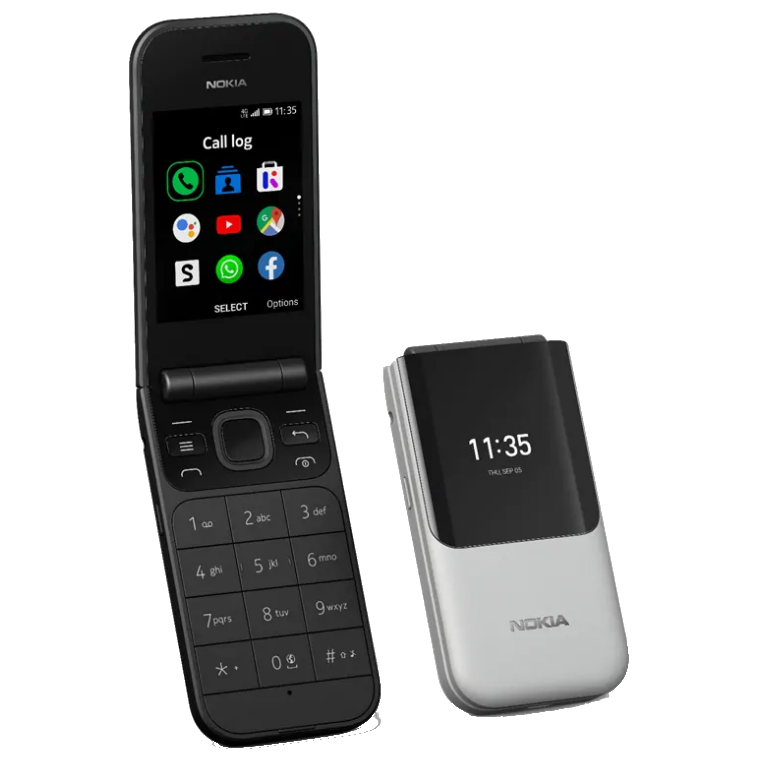
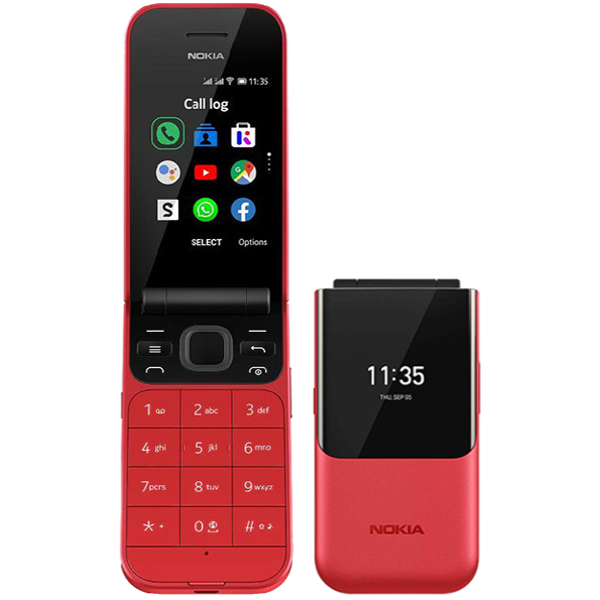
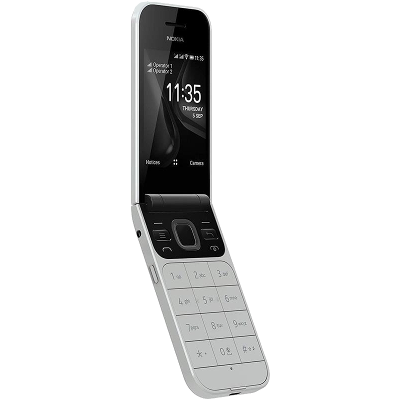
One of the best KaiOS devices for usability (large keys and display), features (screenshots with * and # combo, dedicated keys for volume and Google Assistant...) battery life ... and of course hacking.
Many guides on this website are compatible with this clamshell.
WARNING, update 30.00.17.05 (KaiOS 2.5.2.2) of October 2021 prevents rooting on Nokia 2720!
However, a firehose loader is also available on edl.bananahackers.net, you can also download it from here:
Check the page about Qualcomm-based phones and EDL usage for more information.
To enter in EDL mode, insert cable while holding both volume keys. Don't accidentally hold the assistant key, otherwise you'll have to reinsert the battery to get it to work. To enter the Recovery mode, power up (or just insert cable) while holding Volume Up. It has also a fastboot entry ("Reboot to bootloader") but makes a normal reboot instead.
Nokia 800 Tough
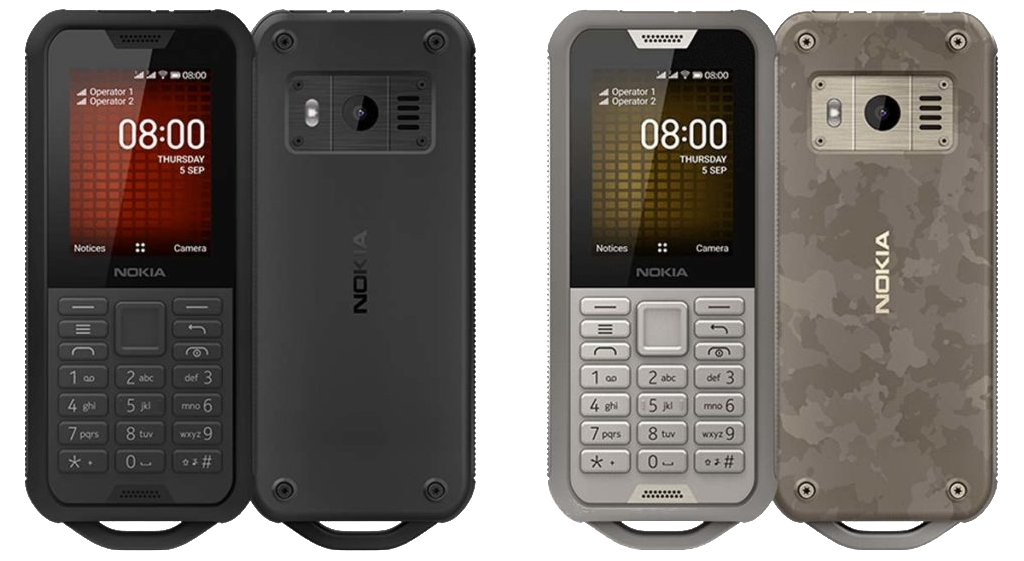
Considered one of the best rugged, the Nokia 800 Tough is among the best KaiOS devices for developers, like its brothers 8110 and 2720.
It also boasts the longest battery life which gives it a whopping 40 days of standby time, but it is also its weak point, because its non-removable. In case of problems and boot loops, you will have to wait for it to drain, or try a combination of keys... and cross the fingers.
WARNING, update 30.00.17.05 (KaiOS 2.5.2.2) of October 2021 prevents rooting on Nokia 800!
However, a firehose loader to work in EDL mode is also available on edl.bananahackers.net, you can download it from here:
Check the page about Qualcomm-based phones and EDL usage for more information.

Also known as "bananaphone" for its curved shape reminiscent of a banana, the Nokia 8110 4G is definitely the KaiOS device with fewer secrets to hide by now, just consult most of the guides on this site to understand why we have titled the community to it.
Released on July 2018, this small and simple device is the beginning of a revolution in the world of mobile operating systems. The whole website revolves around it, so choose your tests without problems.
Find out more on the dedicated page:
These two very first models of KaiOS devices sold in the United States are an exception among other Qualcomm-based devices, as they were the first to be tested on the market. Any other device sold in the US would later be "locked for debugging". There are many other models in this series, of which the manufacturers have already taken steps to disable the Developer options.
Find out more about Alcatel OT-4044x on the dedicated page:
other debug-unlocked Qualcomm phones
Spreadtrum-based KaiOS devices
On Spreadtrum-based models dial the debug code *#*#33284#*#* and a bug icon should appear in the task bar above, and also add the code *#*#0574#*#* to enable USB debugging from a menu, this allows you to use ADB and DevTools.
All devices where this rule has been verified work perfectly, and most likely every device with this chipset should work equally and without problems. Unlike many Qualcomm-based models, they are much more reliable in terms of software development. The list is really long in comparison:
Alcatel 3078
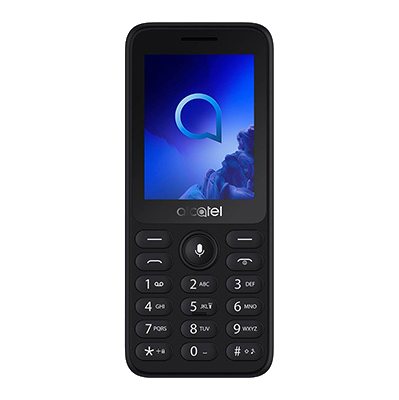
Alcatel 3088
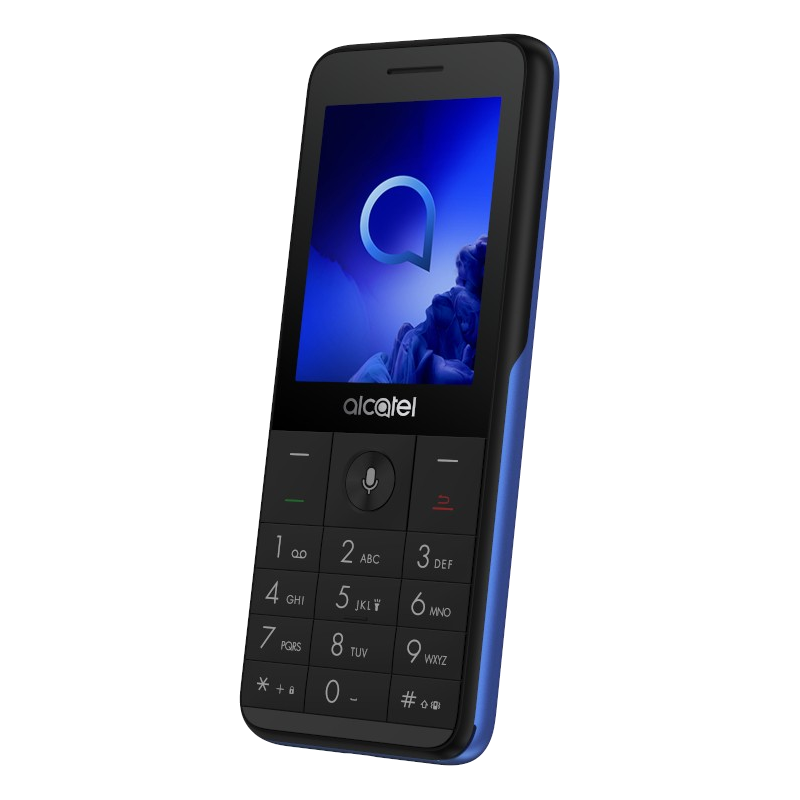
Energizer E241s
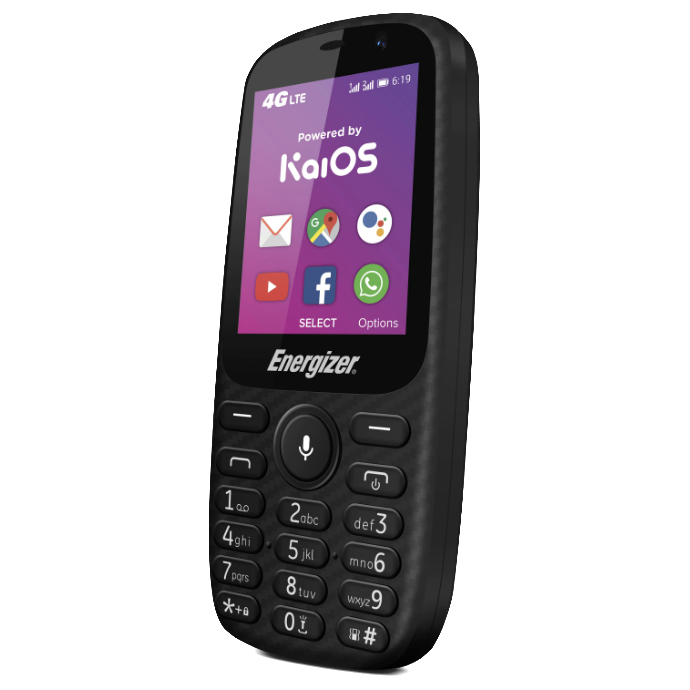
Energizer E241
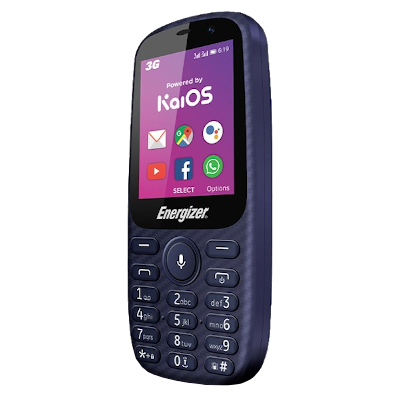
Energizer H280s
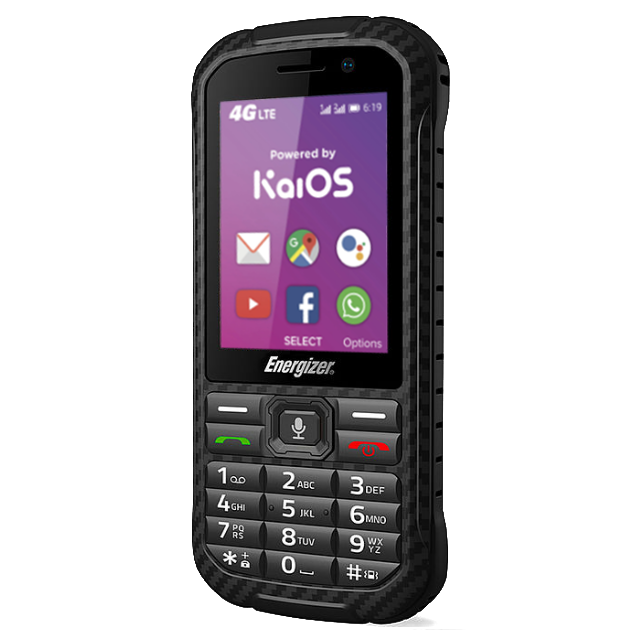
IKU V400
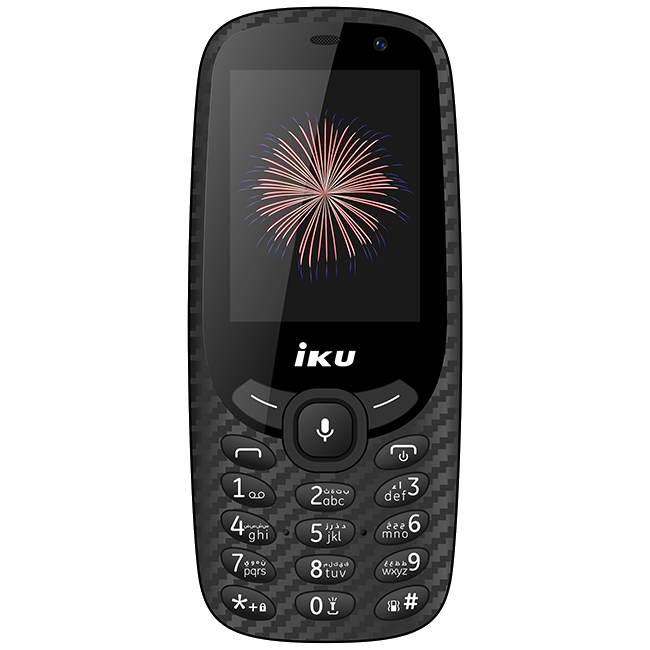
MTN Smart S/T 3G
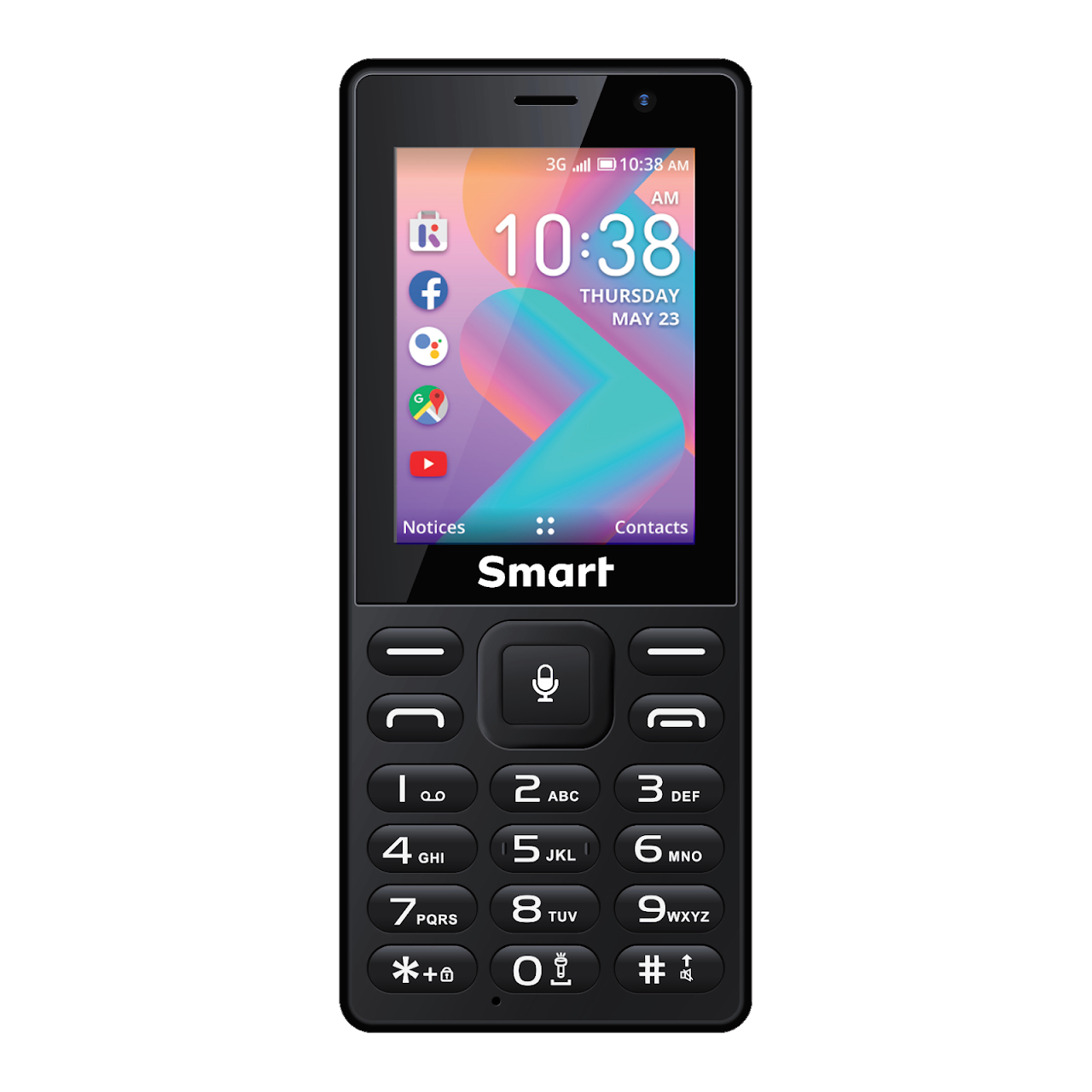
Nobby 231

Orange Sanza
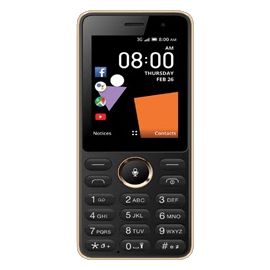
Orange Sanza XL
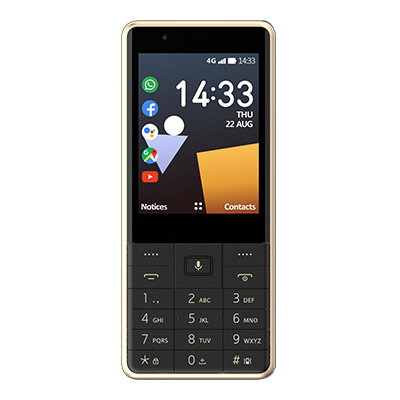
Positivo P70s
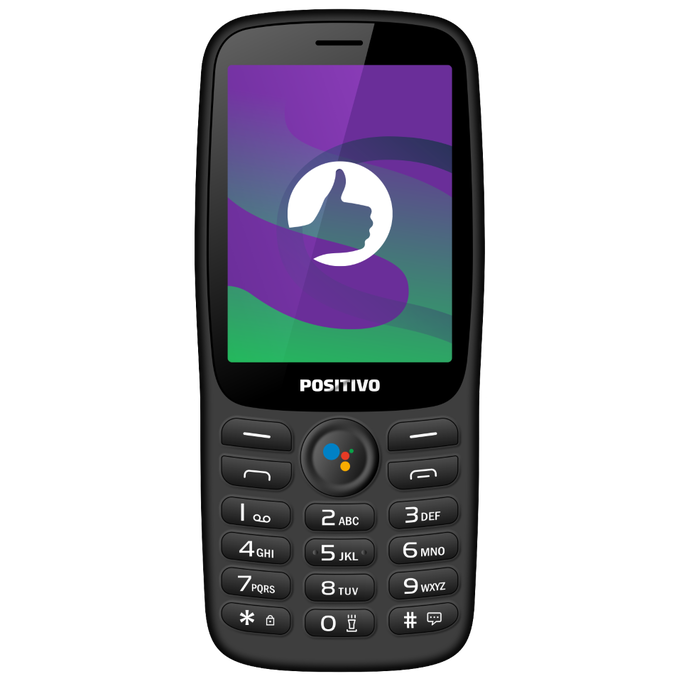
QMobile 4G Plus
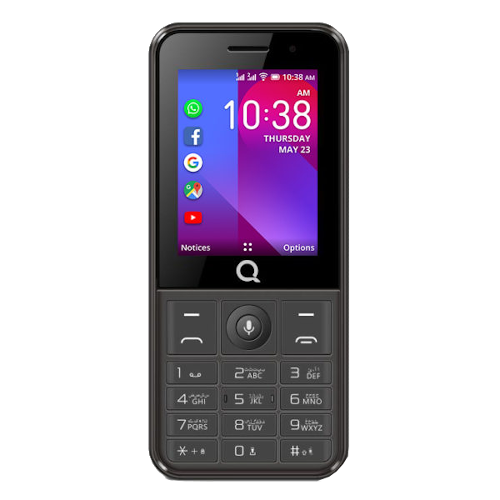
Tigo Kitochi 4G Smart
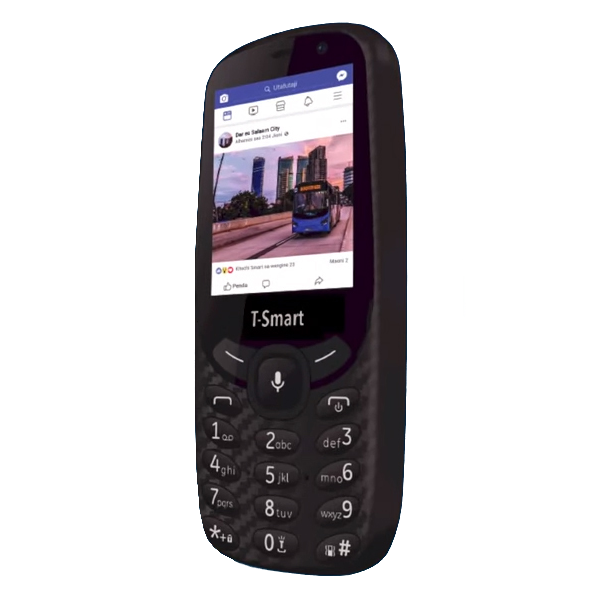
Wonder L2407 4G
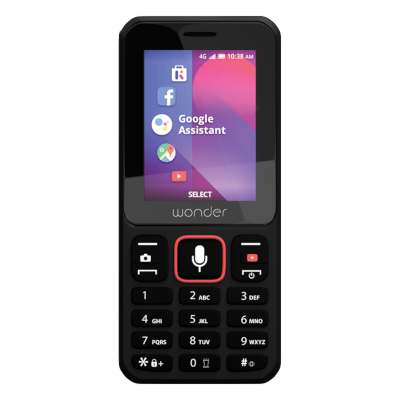
other debug-unlocked Spreadtrum phones
Even the devices based on Spreadtrum, have their black sheep in the family (definitely BLU Zoey Smart, Jio Phone and Jio Phone 2 because they had no codes, instead for Accent Nubia 50K I only found and verified the firmware files, but I don't know anyone who owns this device). Precisely for this reason I do not want to mark all Spreadtrum devices for which we have no researchers (Africell Afriphone, iPRO Geniphone A22, Multilaser ZAPP, TECNO T901 and Zantel Smarta) as suitable devices for those who want to develop applications. Find out more here:
Mediatek-based KaiOS devices
Mediatek-based devices have no codes, but in most cases "Fastboot" mode and related commands work fine. ADB and debugging can be enabled by flashing a boot partition, while the "Developer" menu can be enabled by placing a single file in the cache partition (this last step also works on some devices with different chipsets). Learn more here:


